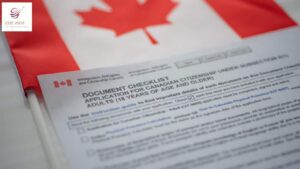
Introduction
Moving to a new country as an international student can be both exciting and daunting. Among the many tasks that require attention, setting up a proper banking foundation is crucial for a smooth transition. Canada, known for its welcoming atmosphere and diverse student population, offers a variety of banking options tailored to international students’ unique needs. This article aims to guide international students in selecting the right Canadian bank account and credit card, ensuring their financial journey in Canada begins on the right note.
Understanding Your Needs
Before delving into the specifics, it’s essential to evaluate your financial requirements. Determine whether you need a bank account for basic day-to-day transactions, an account for saving, or a combination of both. Similarly, consider your spending habits, whether you’ll require a credit card for occasional purchases or emergencies. A clear understanding of your needs will help narrow down the choices.
Choosing the Right Bank Account
Student-Focused Accounts: Most major Canadian banks offer specialized accounts for students. These accounts often come with reduced or waived monthly fees, unlimited transactions, and features designed to cater to students’ financial needs.
No-Fee Accounts: Some banks offer no-fee accounts that cater to students who prioritize keeping their banking costs low. These accounts usually offer limited transactions but are suitable for those who primarily use digital banking services.
Savings Accounts: If you’re interested in setting aside money for future goals, consider opening a savings account alongside your regular account. Look for accounts with competitive interest rates to maximize your savings.
Bank Accessibility: Choose a bank that has a strong presence in your city or province. This ensures easy access to ATMs, branches, and online services, enhancing convenience in managing your finances.
Selecting the Right Credit Card
Student Credit Cards: Many Canadian banks offer credit cards tailored to students. These cards often have lower credit limits but come with benefits like cashback rewards, discounts, and building a credit history.
Secured Credit Cards: If you’re new to credit or have limited credit history, secured credit cards are a good starting point. These cards require a security deposit, which acts as collateral and enables you to establish or rebuild your credit.
Interest Rates and Fees: Compare the interest rates, annual fees, and additional charges associated with different credit cards. Opt for a card with reasonable rates and transparent fee structures.
Rewards and Benefits: Look for credit cards that align with your spending habits. Some cards offer rewards in the form of travel points, cashback, or discounts on specific purchases.
Important Considerations
Documentation: Banks typically require specific documents, such as your passport, study permit, and proof of address, to open an account or get a credit card. Ensure you have these documents readily available.
Currency Exchange: If you’ll be receiving funds in your home currency, inquire about currency exchange rates and fees. Some banks offer better rates than others, potentially saving you money on conversions.
Mobile Banking: Given the digital era, opt for a bank that offers a user-friendly mobile app. This will enable you to manage your finances conveniently through your smartphone.
Customer Support: Prioritize banks with excellent customer service, especially for international students. Clear communication and assistance can be invaluable, particularly when navigating a new financial system.
Conclusion
Selecting the right Canadian bank account and credit card as an international student is a crucial step towards a successful stay in Canada. Carefully assess your needs, compare options, and consider factors such as account types, fees, accessibility, and benefits. With the right financial tools at your disposal, you can focus on your studies and experiences in Canada, knowing that your banking needs are well taken care of.





